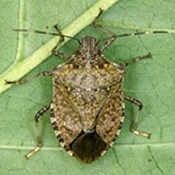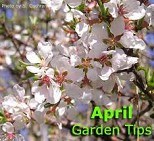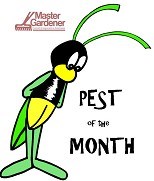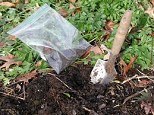The Brown marmorated stink bug, a pest of fruit trees, vegetable crops, and many other plants, has recently spread from the Northeast across North America. It can be a nuisance pest in homes when it seeks overwintering sites in the autumn. The species is native to China, Japan, and Korea.
The best way to deal with these stinky annoying insects getting indoors, is prevention. For example, check around window and door frames and caulk any cracks, and repair any damaged screens. The California factsheet listed below has more detailed suggestions.
The bugs can be picked up with a tissue or paper towel to crush and discard, or numbers of them can be gently brushed into a bowl of water containing a few squirts of detergent so they will sink into the water. Vacuuming them up is another option, but they may leave a strong scent in the vacuum cleaner.
See this factsheet for more details both on how to deal with them getting indoors, and as plant pests, from the University of California: http://www.ipm.ucdavis.edu/PDF/PESTNOTES/pnBMSB.pdf
For updated information, background, maps, management, and current news: http://www.stopbmsb.org
A factsheet from Pennsylvania State University:
http://ento.psu.edu/extension/factsheets/brown-marmorated-stink-bug





